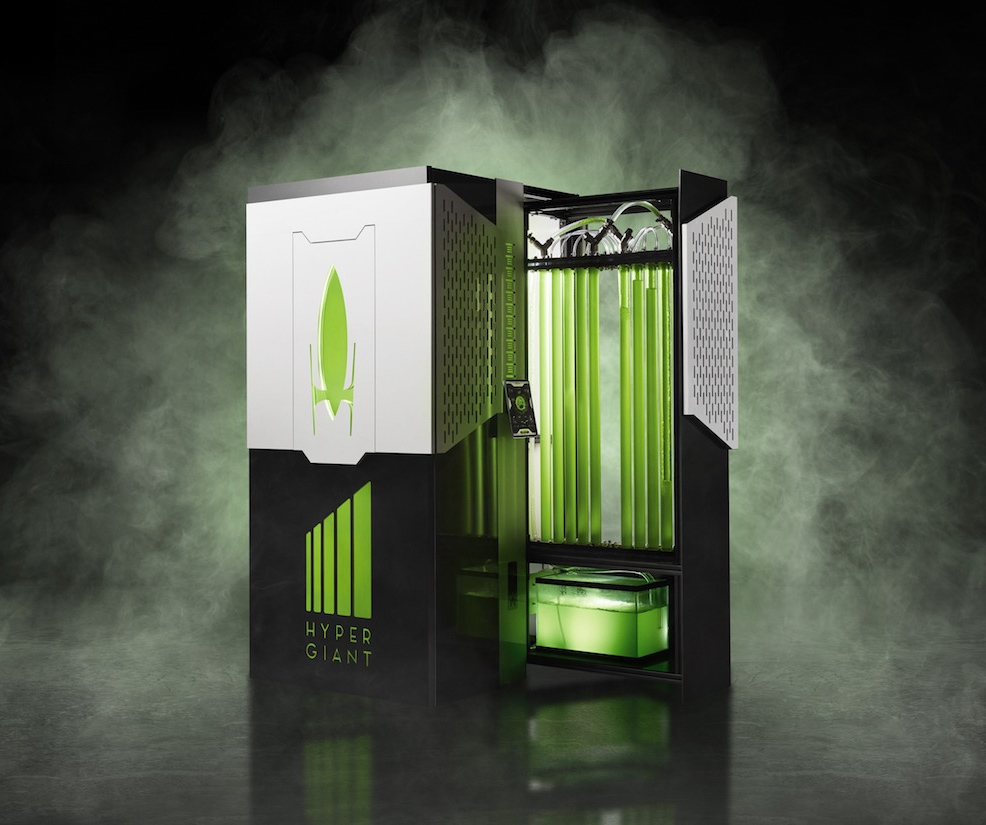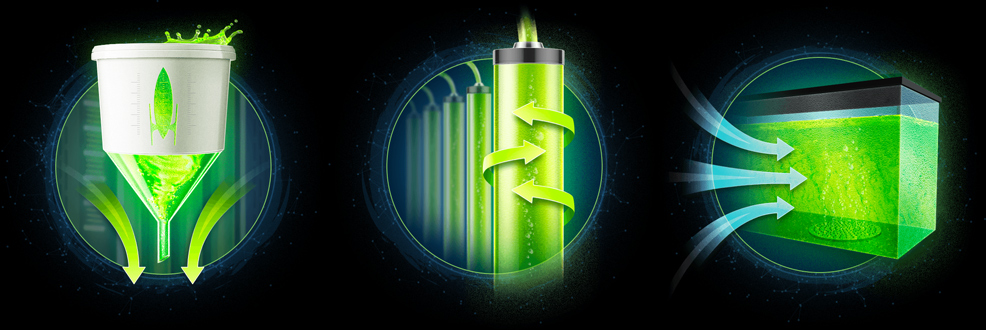
21st September 2019 Bioreactor stores carbon 400 times more effectively than trees A new algae-based device, condensed into a block of just 3'x3'x7' volume, can sequester as much carbon as an entire acre of trees. Could this be the solution to climate change?
Hypergiant Industries, a U.S. technology services company founded last year, has announced the launch of the Eos Bioreactor – a wardrobe-sized device that captures and sequesters carbon from the atmosphere, using algae. This prototype machine uses AI to optimise algae growth, carbon capture and algae output, creating a product that is claimed to be "more sustainable, efficient, manageable and smaller in size than other bioreactor prototypes." In October 2018, the Intergovernmental Panel on Climate Change (IPCC) issued a special report on the impacts of global warming of 1.5°C. This concluded that keeping global warming below 1.5°C would require "rapid, far-reaching and unprecedented changes in all aspects of society." Net human-caused emissions of carbon dioxide (CO2) would need to fall by around 45% from 2010 levels by 2030, reaching 'net zero' by 2050. When it comes to CO2 reduction, algae are one of nature's most efficient tools for carbon capture and sequestration. This has been studied extensively during the past decade. Knowing how effective algae can be, researchers are now attempting to build "bioreactors" to replicate this natural phenomenon. The biggest remaining challenge is to harness the power of algae in the most efficient way possible. With machine intelligence, a reactor can use autonomous health monitoring to create a machine that is aware of – and can react to – its surroundings. By constantly monitoring and managing the amount and type of light, available CO2, temperature, PH level, biodensity, harvest cycles, and more, researchers can create the perfect conditions to maximise carbon sequestration.
Here is how it works: • Algae need three key elements to grow: carbon dioxide, light and water. • Algae have the best efficiency and capture capacity when receiving a steady stream of CO2, particularly via industrial heating, ventilation, and air conditioning (HVAC) systems, i.e. near exhaust and industrial pipes. • As algae consume CO2, they produce biomass. This biomass can then be harvested and processed to create fuel, oils, nutrient-rich high-protein food sources, fertilizers, plastics, cosmetics, and more. • The device is based on a closed-system model, with every part of the growth process being tightly controlled and optimised with machine intelligence to maximise the CO2 consumption.
The Eos Bioreactor, measuring 3'x3'x7', is designed for use in urban environments where it could be fitted within commercial buildings. The long-term concept for the prototype includes integration as part of a larger "smart cities" program, where the algae byproduct of biodiesel could provide fuel for a variety of other products that improve urban living. Later this year, Hypergiant Industries plans to release blueprints for the machine to the online maker community. The goal is to empower individuals to create similar, smaller and modular devices for use in residential units. Furthermore, the company will focus on the use of recycled ocean plastics to create the devices and encourages the community to do so as well. Additional details will be announced in 2020. "Our goal at Hypergiant Industries is to use the world's best technologies to solve the world's biggest problems. Excess carbon in our atmosphere is driving a number of massive catastrophes for our planet and pushing us to get off planet and colonise space," said Ben Lamm, CEO and founder of Hypergiant Industries. "I want humanity to colonise space because I want to explore the cosmos to better understand our place within it. I don't want us to colonise space because we are running away from our home planet. This device is one of our first efforts focused on fixing the planet we are on. We hope to inspire and collaborate with others on a similar mission."
Comments »
If you enjoyed this article, please consider sharing it:
|









